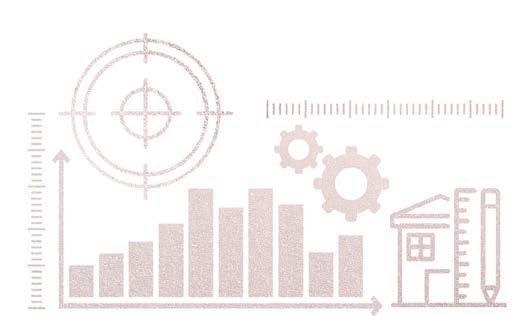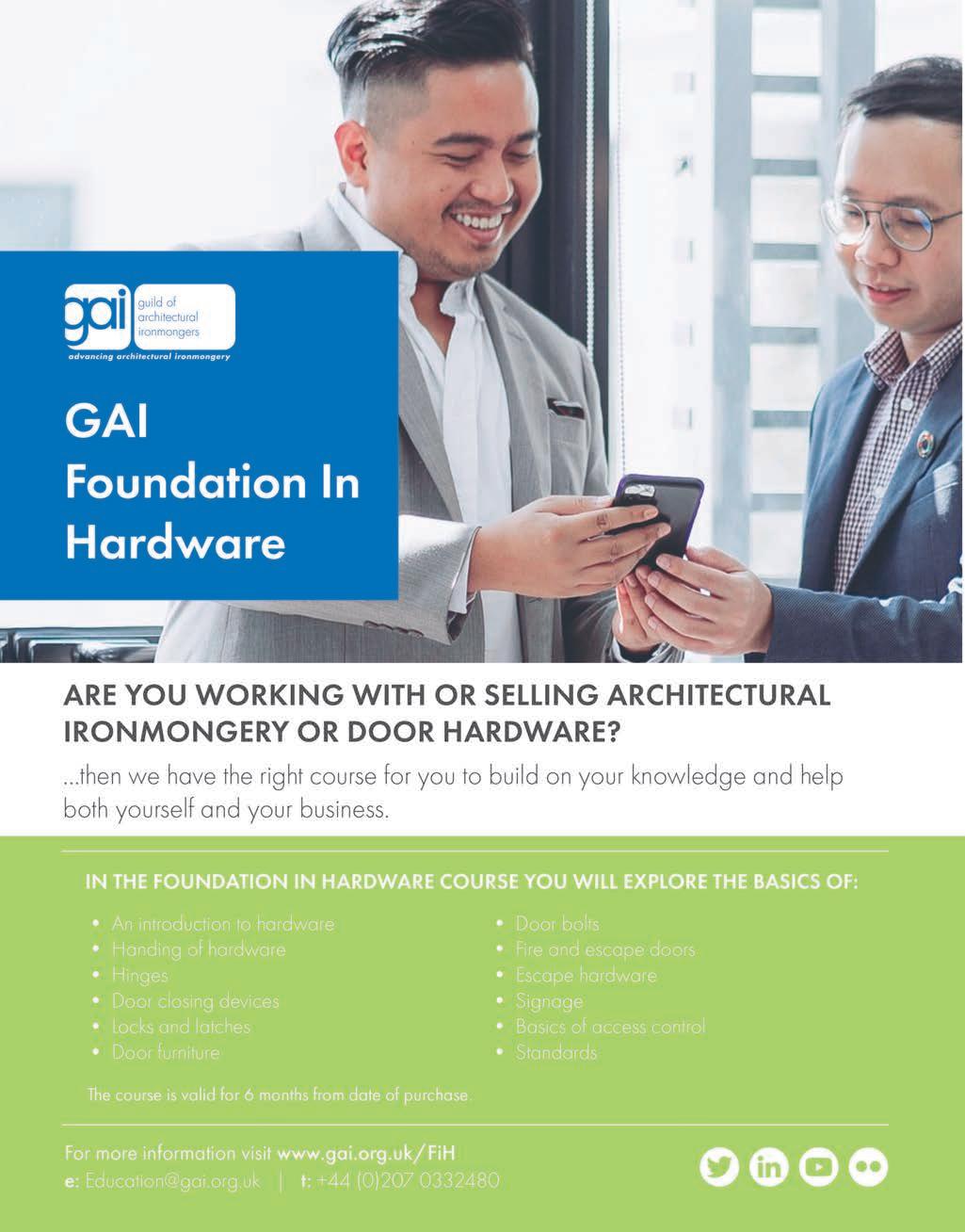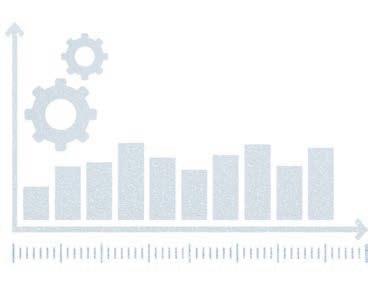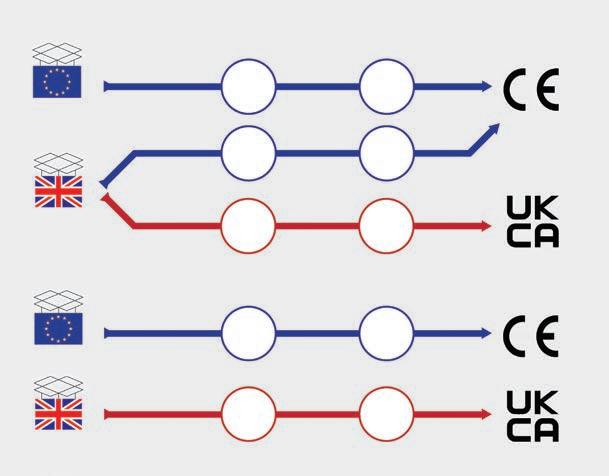
8 minute read
GAI Members on competence
STANDARD BEARERS
Setting the Bar – the final report resulting from the Grenfell inquiry – has put competency under the microscope. In the last issue of AIJ we looked at the impact of the report on the industry. Here we report on the views of GAI members, solicited in a recent survey.
Advertisement
When a fire broke out on 14 June 2017 in a block of social housing flats in North Kensington, London causing the death of 72 people, little did the built environment industry know it would herald a revolution for how it and its suppliers would work in the future.
The Grenfell Tower tragedy was one of the worst disasters of modern times and it plunged the reputation of the built environment industry into the doldrums. The ensuing inquiry led by Dame Judith Hackitt revealed a culture of poor standards, buck-passing and ‘a race to the bottom’. The inquiry saw Dame Judith launch a scathing attack on the construction industry as revelations revealed it needed crucial wide systemic change. It was a wake up call for all involved.
Blueprint for change
In August 2019, an interim report, Raising the Bar, was published by the Competence Steering Group (CSG), a cross-industry body representing more than 150 organisations, including the GAI.
In October 2020, the final report, Setting the Bar: A New Competence Regime for Building a Safer Future, was published. This provides a blueprint for improving the competence of those working on higher-risk buildings and driving culture change in the industry.
The CSG and its working groups collected feedback to develop sector and competence frameworks that set out the skills, knowledge, experience and behaviours needed to carry out specific roles and deliver a more rigorous approach to the essential training and assessment that is required.
The proposed system of competence in the report is made up of four key elements: a competence committee; a national suite of sector specific standards; independent assessment of competence standards; checks and balances for certifying standards. WG12, the Construction Products Competence Working Group is currently working towards the publication of a new Construction Products Competency Matrix which is shortly due to be published. Douglas Masterson, the GAI technical manager, is co-chair of WG12 and a member of the CSG.
GAI get ahead
So competence has been thrust to the top of the agenda. ‘Setting the Bar’ defines competence as “the combination of skills, knowledge, experience and behaviours that enable a person to undertake responsibilities and perform activities to a recognised standard on a regular basis.”
Which will come as good news to those GAI members who have gained the Foundation, Certificate, Diploma or RegAI qualifications and therefore know first hand the rigorous process of acquiring these badges of professionalism. As GAI chair Julian Newman says: “The GAI education programme is the only way to prove competence in the specification of architectural hardware.”
Douglas Masterson wrote in this magazine: “With so much emphasis on competence we must all ask ourselves as manufacturers, specifiers or installers of products what we can do to increase our own levels of competency in the tasks we are required to do.”
So we asked GAI Members for their reaction to Setting the Bar and what they are doing to attain and sustain competence in their businesses. The results were heartening. When asked how important competency is to their business just short of 100 per cent of respondents said “extremely” with the remaining few deeming it “very”.
Setting the Bar is the final report from the Competence Steering Group
HOW IMPORTANT IS COMPETENCY TO YOUR BUSINESS?
n 7% Very n 93% Extremely THE GAI TECHNICAL COMMITTEE SHARES ITS VIEWS
The GAI technical competence is second to none and is seen as the authoritative voice of the ironmongery industry, hence why here at RTR Services we fully support any new initiatives. The GAI involvement in standards development gives comfort to members that their best interests are being served.”
Paul Watson, Sales & marketing director, RTR Services
Fire safety is about hundreds, if not thousands, of different factors, that need to work together as a complete system when an emergency happens. There is not one product or process that will make a building and its users safe; the holistic view of competency across the passive fire door industry is a welcome approach and the only way forward. Every single person involved in the chain of managing fire safety products, from the initial product design right through to the facilities manager conducting routine maintenance, needs to understand their legal and moral responsibilities for keeping their residents safe. The industry must be unrelenting in challenging its culture, sorting competency and implementing new controls now, rather than waiting for legislation to dictate what needs to be done.”
Hannah Mansell, Masonite UK Group technical director

HOW DO YOU IMPROVE STAFF KNOWLEDGE, SKILLS AND TRAINING?
0 10 20 30 40 50 60 70 80 90 100
n % Training Days n % Courses n % One-to-one training n % Leave it to the individual to research and develop
Members were also asked about what measures they take to raise/ ensure competency? Almost all responded that training was the key, with most putting staff through the GAI education programme and undertaking CPD. One respondent shared their mix of measures. “All externally-facing staff are GAI-qualified or qualifying, all paid for by the company. We have an internal training academy which runs permanently rotating internal technical courses on all key topics. We run a monthly online quiz (with prize) for staff and our formal annual appraisal system embeds a permanent review of competencies and training needs which are then followed up by managers and HR. We will soon be launching a self-service training platform on a new intranet system and we maintain a fully up-todate product knowledge base which is accessible for all staff.”
Keeping abreast of relevant standards was also a popular response. The ways in which training is carried out varied among survey respondents. Around 68 per cent operate training days, nearly 88 per

TRAINING WHEELS
The following are examples of highly respected industry training which trade associations provide for those within their membership:
GAI
The GAI has spent nearly 60 years educating the ironmongery industry with a training portfolio which caters for all abilities. This includes introductory level through Foundation in Hardware, in-depth product knowledge from the Certificate in Hardware, right through to the specification of fully compliant ironmongery products on to a project by achieving DipGAI status. Beyond this the RegAI Continuing Professional Development CPD programme ensures that product knowledge is maintained and kept fully up to date with industry standards and latest developments. A full prospectus can be downloaded from www. gai.org.uk.
ADSA
The Automatic Door Suppliers Association (ADSA) delivers a comprehensive training program which gives course delegates an in depth knowledge of the safe operating standards for powered pedestrian doors. The Qualification when linked to a CITB approved Health and Safety in construction training course forms a critical pillar in demonstrating industry competence. In Early 2021 the association will continue its drive to further improve competence by adding National Vocational Qualifications (NVQs) to its Educational portfolio.
MLA
Master Locksmiths Association (MLA) run a range of training courses to become a locksmith, this encompasses beginners’ locksmith courses through to advanced courses for existing locksmiths who want to learn new skills.
FDIS
Fire Door Inspection Scheme (FDIS) provides an online education programme which is available to anyone who wishes to gain a greater knowledge of fire doors or else to become a certificated fire door inspector.

WHAT AREAS OF COMPETENCY NEED IMPROVING IN YOUR OPINION?
Management of Time and Priority Setting
Work Planning and Scheduling
Listening and Organising
Clarity of Communication
Getting Objective Information
Training, Mentoring and Delegating Problem Identification and Solution Assessing Risks and Decision-Making Thinking Clearly and Analytically
0% 10% 20% 30% 40%
cent use courses, 62 per cent embark on one-to-one training and only one quarter leave training to the individual staff member to develop themselves.
Another positive result showed that most respondents didn’t feel they needed much in the way of support for raising competency in their companies. For those who did it tended to focus on training courses.
Life savers
Not surprisingly when asked how important it is to the industry that we raise competency standards, virtually all respondents stressed how vital it is, often being a life or death issue. “It is critical,” said one member, “our trade is technical and safety-sensitive. Lives depend on our advice and supply”.
Another agreed: “The industry supplies life-saving products as well as security products. Knowledge and competency is paramount in avoiding risk to life.”
“It is imperative,” said another. “We must have the highest levels of competence in our industry sector to inspire confidence thought the rest of the construction industry.” Another respondent said: “This is probably one of the most important issues in our industry as many of our products fall into the life saving category.”
Asked about how we best measure competency one of the overriding responses was to have certification and put more emphasis on professional qualifications, specifically RegAI status.
Setting the Bar is only the start of a long road to developing better quality, competence and standards in the built environment but a journey many GAI members have already travelled. n

WHAT GAI MEMBERS THINK ABOUT COMPETENCY
Whilst the GAI has for years looked to improve knowledge and competency through the training programs it provides, the construction industry as a whole has been too quick to ‘value engineer’ everything and the GAI members have been complicit in this. The long term answer is probably more red tape to control/restrict what can and can’t be done with regards to product substitution but that may be the price to pay to avoid another Grenfell disaster.
Too many AIs like to think they are designers...concentrate on the technical aspects of the products and specs...let designers design. Competency also needs to be allied to better commercial skills than many AIs display.
What differentiates the GAI membership is the accredited level of competency acquired through not only the education programme but also the constant work in ensuring the membership is informed and up to speed with developments within industry standards and trends in technology. The value to our customers is assurance of competency.
We should be shouting about the seriousness which the GAI takes our competency.









